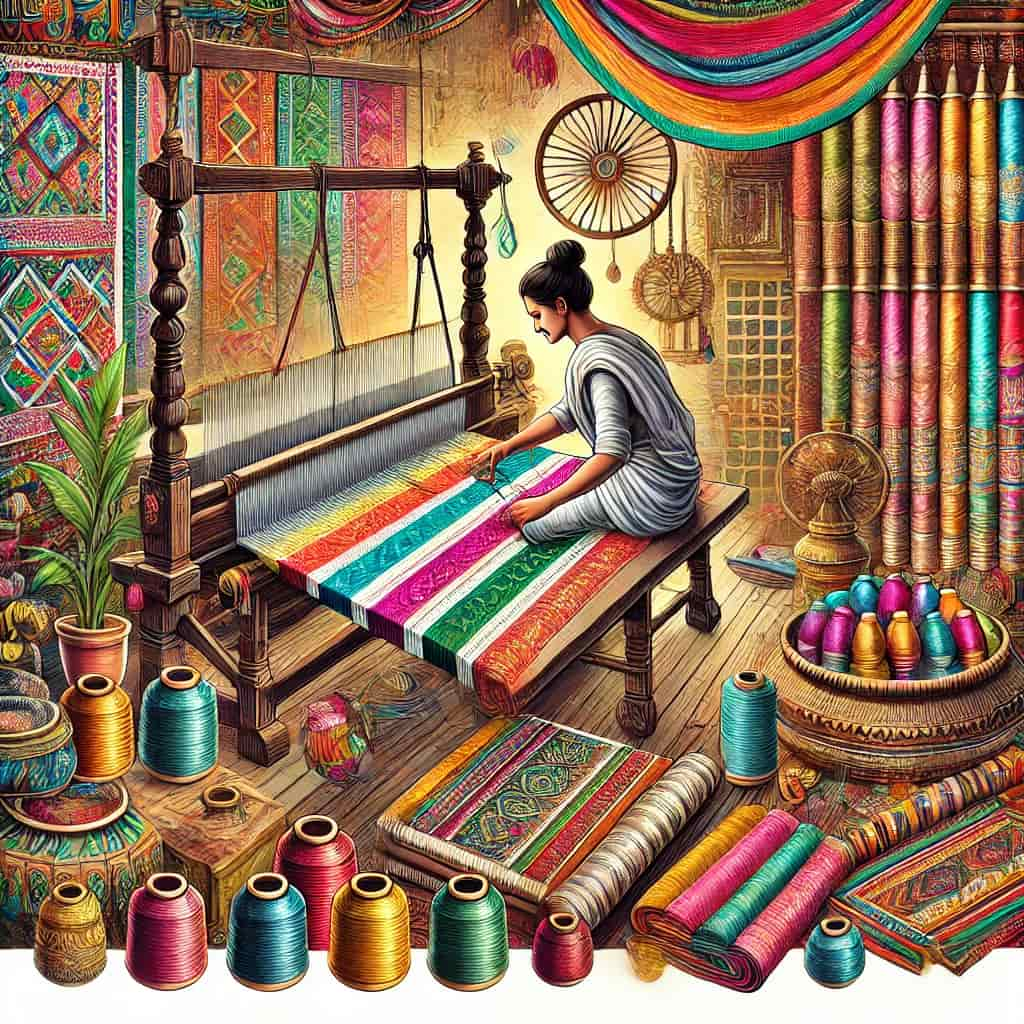
How to Identify a Pure Kanjivaram Silk Saree: Authenticity Tests and Tips
Kanjivaram silk sarees represent a pinnacle of Indian weaving artistry, known for their vibrant colors and intricate designs. With the rising popularity of these sarees, the market is also seeing an increase in counterfeit products. This guide provides a comprehensive approach to distinguishing authentic Kanjivaram silk sarees from imitations, ensuring that enthusiasts can make informed purchases.
The Heritage of Kanjivaram Silk
Kanjivaram silk, also known as Kanchipuram silk, originates from the town of Kanchipuram in Tamil Nadu, India. This region has been a weaving hub for centuries, with the craft passed down through generations. The silk used in these sarees is sourced from the mulberry silkworm, which is known for producing one of the finest silks in the world. The sarees are especially notable for their weight and their use of gold and silver zari that add to the saree's grandeur.
Historical Significance
Kanjivaram sarees are more than just attire; they are a significant part of Indian weddings and festivals, symbolizing prosperity and success. Historically, these sarees were worn by royalty and the aristocracy, and they continue to be a popular choice for bridal wear due to their elegance and timeless appeal.

Authenticity Tests for Kanjivaram Silk
Identifying an authentic Kanjivaram silk saree involves several key tests. Here’s how you can confirm the authenticity of the silk and zari:
Silk Quality Tests
- Burn Test: Take a small strand of silk and burn it. Genuine silk burns with a smell similar to burnt hair, and the ashes will be fine and powdery, indicating that the silk is real.
- Ring Test: True Kanjivaram silk is incredibly soft and should smoothly slide through a ring. If the saree gets stuck or doesn’t pass through easily, it might not be made from pure silk.

Zari Verification
- Scratch Test: Gently scratch the zari area. Authentic zari is traditionally made by wrapping a silk thread with a silver wire and then gilded with gold. If the underlying material appears silvery, it's likely genuine.
- Magnet Test: Pure gold and silver are non-magnetic. If a magnet attracts the zari, it is not made from real gold or silver.
Expert Insights
To further enhance the credibility of this guide, insights from Mr. Raghavendra Kumar, a veteran weaver from Kanchipuram with over 30 years of experience in silk weaving, are included. According to Mr. Kumar, “The true essence of a Kanjivaram saree lies not just in its material but also in its craftsmanship. The alignment of the weave, precision of the motifs, and the quality of the zari are what distinguish a genuine piece from a counterfeit.”
Buying Guide: Tips on Purchasing Genuine Kanjivaram Silk
When purchasing a Kanjivaram saree, consider these tips:
- Vendor Verification: Always buy from reputable sellers or directly from the weavers in Kanchipuram.
- Price Check: Be wary of low prices. The materials and craftsmanship involved in creating an authentic Kanjivaram saree justify a higher price point.
FAQs
Q: Can Kanjivaram silk sarees be washed at home?
A: It is recommended to dry clean Kanjivaram silk sarees to maintain their texture and color integrity.
Q: How can I store my Kanjivaram saree to ensure its longevity?
A: Store your saree in a dry place wrapped in muslin cloth. Avoid folding them in the same place repeatedly to prevent tearing at the folds.
Q: Are there specific seasons to wear Kanjivaram silk sarees?
A: While Kanjivaram silk sarees are suitable for all seasons, they are particularly popular during festive and wedding seasons due to their opulence.
Conclusion
Investing in a Kanjivaram silk saree is investing in a piece of India’s rich textile heritage. By following this detailed guide, you can ensure that your purchase is genuine, supporting not only the local economy but also the preservation of this traditional art form.



Leave a comment
This site is protected by hCaptcha and the hCaptcha Privacy Policy and Terms of Service apply.